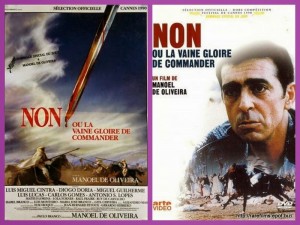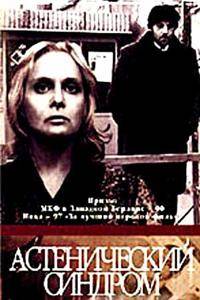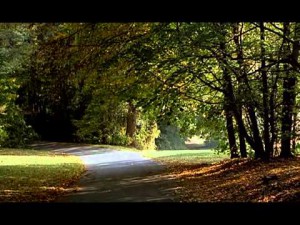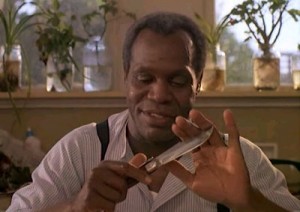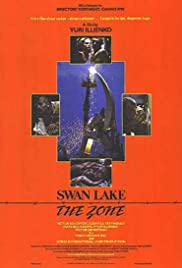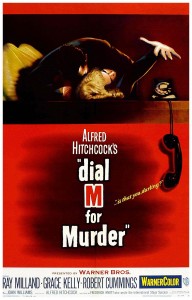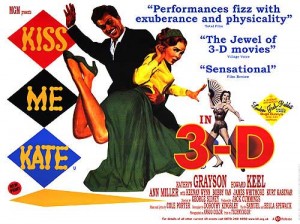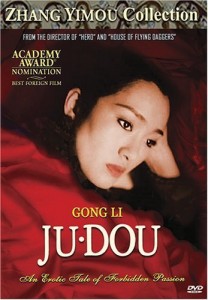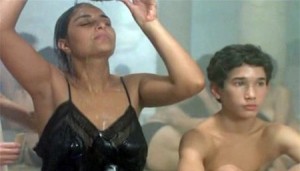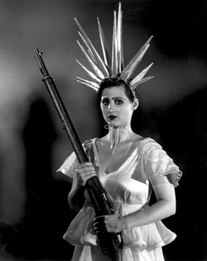From the Chicago Reader (October 12, 1990). — J.R.
The 26th Chicago International Film Festival includes, at the latest count, 110 features and ten additional programs, spaced out over 15 days in two locations –a somewhat more modest menu than last year’s. Apart from this streamlining, it would be a pleasure to report some major improvements in the overall selection, but I’m afraid wanting isn’t having, and from the looks of things, this year’s lineup is not very inspiring.
About six weeks ago, when the festival issued a list of about 100 “confirmed and invited” films, I was hopeful. Based on what I’d already seen or heard about, the list was, barring some omissions, a fair summary of what was going on in world cinema, which is more than one could say for previous Chicago festival lineups. I pointed this out to a colleague, who replied, “Yeah, but let’s see how many of these actually turn up,” and I’m sorry to say his skepticism was warranted. Gradually, irrevocably, over half of the hottest titles were dropped from the list, including Kira Muratova’s remarkable The Asthenic Syndrome, Jean-Luc Godard’s La nouvelle vague, Nanni Moretti’s Palombella Rosa, Pavel Lounguine’s Taxi Blues, Charles Burnett’s soon-to-open To Sleep With Anger, Aki Kaurismaki’s The Match Factory Girl, Bertrand Tavernier’s Daddy Nostalgy, Otar Iosseliani’s Et la lumiere fut, and Patrice Leconte’s The Hairdresser’s Husband. Over the same period, many new titles were added, but most of the remaining cream of the crop that I recently saw at the Toronto and Vancouver festivals — Jane Campion’s An Angel at My Table, Jon Jost’s All the Vermeers in New York and Sure Fire, Katherine Gilday’s The Famine Within, Yuri Ilyenko’s Swan Lake–The Zone, Raul Ruiz’s The Golden Boat, Jennie Livingston’s Paris Is Burning, and Yvonne Rainer’s Privilege — were not among these additions.
One doesn’t want to be churlish about any event that brings this many foreign-language pictures (and 15 American independent features) into the city. Overlooking the question of aesthetics for a moment, I happen to think that just about any international film festival offers a better sense of what’s going on in the world than the news, which is shaped so much nowadays by multinational business interests that it’s often hard to find very much else there. The inestimable value of the Soviet films I’ve seen lately, for instance, is their rendering of the emotional and sensual textures of Soviet life, from the barbaric urban apathy and anger found in The Asthenic Syndrome to the prison conditions glimpsed in Swan Lake–The Zone. The former quasi-allegorical mode of Soviet filmmaking is mingling with the social-realist mode, and the combination, yielding new kinds of suggestive content, is potent enough to recall the discoveries of the French New Wave 30 years ago. While I haven’t seen any of the three Soviet films scheduled for the Chicago festival, I suspect that they’re all probably worth seeing for this reason alone.
So the good news is that we’re getting two weeks’ worth of what’s happening all over the world, and the main regret is that we’re missing some of the more important dispatches. The problem is less intention than capacity and clout. The movie business as a whole is currently motored on a boom-or-bust mentality, dictating that every film has to be a major event in order to be considered marketable, much less seeable. Some of this is ascribable to the hard facts of contemporary moviegoing; according to the current issue of Premiere, 75 percent of the American public sees fewer than five movies a year. But another part stems from the hysteria scorched-earth Reaganomics has created in distributors of foreign films. One might suppose, for instance, that Alain Resnais’ last feature, I Want to Go Home — scripted by Jules Feiffer, and starring Gerard Depardieu and songwriter Adolph Green — would have some limited market in the U.S., but over a year has passed since it won a prize in Venice and it hasn’t even been shown at any of the important U.S. festivals. I assume that Godard’s new film was denied to the festivals in Toronto and Chicago because its handlers mistakenly thought it would find a distributor after showing at the New York festival.
All film festivals have to cope with this sorry state of affairs; even the powerful New York festival can’t get everything it wants. But I suspect that what keeps the Chicago festival’s lineup relatively mediocre, despite noble efforts to upgrade the selection, is simply a lack of professional expertise. Last year I was present when a Hungarian director was politely explaining to one of the festival organizers that two or more of his films had recently been projected here at the wrong screen ratio; the staff member apologized, then asked him what a ratio was. I realize average filmgoers can’t be expected to concern themselves with the relative widths and lengths of projected screen images and the lenses and masking devices needed for accurate projection. But when average filmgoers are in charge of running a film festival, certain directors, producers, and distributors might hesitate about entrusting them with their prints — not to mention the future reputations of their films.
As I’ve noted in previous years, this lack of expertise is especially harmful when it comes to informing the selections with an overall sense of film history. The festival’s aesthetic position — insofar as it can be said to have one — is essentially that “movies are fun,” which undoubtedly helps to explain why the only retrospective being offered this year is a selection of 3-D movies. Most of these — with the notable exceptions of Dial M for Murder and Kiss Me Kate (and possibly Raoul Walsh’s Gun Fury) — are pretty awful as movies but occasionally fun as excursions into 3-D, despite the fact that one-eyed directors like Walsh and Andre de Toth (House of Wax) were in charge of some of them. More generally, the festival lacks intellectual substance (even though fun movies can also be intellectual). With the striking exception of Manoel de Oliveira’s No, or the Vainglory of Command — a remarkable and unorthodox meditation on colonial wars by the greatest living Portuguese filmmaker, still lucid and powerful in his 80s — none of the 20-odd selections I’ve seen are likely to bowl you over with their brain power.
My only other unqualified recommendations would be Secret Love, Hidden Faces (also known as Ju Dou) from the People’s Republic of China by Zhang Yi-mou, the director of Red Sorghum — notable for both its ravishing uses of color and its disturbing juxtaposition of a realistically depicted adulterous couple with their mythic-symbolic offspring — and Ferid Boughedir’s Child of the Terraces (also known as Halfaouine–Boy of the Terraces), a sensuous and often comic first feature from Tunisia about a 12-year-old boy’s sexual awakening in the old quarter of Tunis. Second viewings of these films would be necessary before I would feel qualified to say whether they’re masterpieces or not, but they’re certainly well worth experiencing.
Robert Altman’s Vincent and Theo has its limitations as a film about the origins and processes of Vincent van Gogh’s painting, but for performances and overall conception it’s still Altman’s most interesting theatrical feature in several years. Michael Verhoeven’s The Nasty Girl, a crowd-pleasing Bavarian comedy about a contemporary search into the Nazi past, begins delightfully and freshly before settling into stylistic and moral monotony, but it still should be seen. I’m not really a fan of either Joao Cesar Monteiro’s Portuguese black comedy Recollections of the Yellow House or Peter Medak and screenwriter Philip Ridley’s English gangster picture The Krays (soon to open commercially), but I know many serious colleagues who are, and both are fairly original and ambitious works of some substance. I’ve only sampled Guy Maddin’s Archangel, from Winnipeg, but what I saw suggests that it’s every bit as weird, singular, and evocative in its black-and-white, early-cinema textures as Maddin’s previous Tales From the Gimli Hospital.
Further down the list is Duane Clark’s U.S. independent feature Shaking the Tree, shot in Chicago, a conventional buddy movie about a quartet of longtime (if dissimilar) chums set at Christmas 1989, sparked intermittently by decent acting. If you missed Hector Olivera’s flawed but effective Argentinean agitprop The Night of the Pencils when it showed at the Film Center in August 1989, you might want to see it now, although judging from reports, Polish director Ryszard Bugajski’s banned Interrogation (1982), another festival selection, is a much stronger work about the same subject, penal injustice. Chuck Workman’s Superstar is a slick and entertaining account of Andy Warhol’s career that doesn’t feel obliged to correct public misinformation about him; if you’ve heard that Warhol’s Sleep is eight hours of a man asleep filmed from a single fixed camera position, Workman’s film does nothing to disabuse you of that legend.
Bethune, the Making of a Hero, a blockbuster biopic about an eccentric Canadian doctor who became a hero in Mao’s China, played by Donald Sutherland –the most expensive Canadian feature to date — is muddled in structure but interesting in certain details. And Dennis Hopper’s The Hot Spot — also about to open commercially — is an enjoyable bad movie, a campy piece of noirish sleaze that disappoints only because one expects a lot more from Hopper. Otherwise, there are bound to be a few nuggets amid the usual dross, but your guess is as good as mine about where to look. The reviews below should provide you with a running start; recommended films are preceded by check marks. Be forewarned that last- minute cancellations are always possible, so phoning first is advisable (three titles in the flyer have already been replaced and another feature has been added).
Screenings are at the Music Box, 3733 N. Southport, and the Fine Arts, 418 S. Michigan. Tickets can be purchased in person at the theater box office the day of the screening starting one hour prior to the screening or at the film festival store at 444 N. LaSalle. They are also available by phone at 644-3456 or 559-1212. General admission to each program, with some exceptions, is $6, $5 for Cinema/Chicago members. The 3-D movies will run you $7 each, $6 for Cinema/Chicago members, which includes polarized 3-D glasses. The opening night film, TV-commercials program, and “Best of the Festival” programs cost $10, $9 for Cinema/Chicago members. If you want to attend the opening night gala honoring Sophia Loren at the 515 North State Tower, prepare to shell out $150, which includes dinner as well as the price of the film.
For further information, call 644-3456 or 559-1212. Happy hunting!

